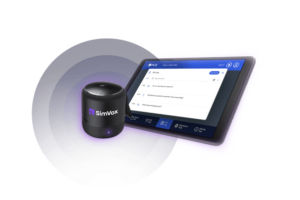VRpatients
VRPatients is a physiologically-based clinical simulation training platform that immerses a healthcare provider or first responder into actual case scenarios. Headquartered in Wilmington, Ohio, the VRPatients healthcare simulation training platform allows learners to interview, assess, diagnose and treat patients in real-time. This technology offers many advantages that traditional classroom training alone cannot provide.
VRpatients, and its parent company, Virtual Education Systems, began as a startup funded by Cincinnati-based tech incubator CincyTech and Columbus-based Rev1 Ventures before being acquired in 2018. Since then, the entire medical simulation platform, including the UI/UX experience, clinical case scenarios, environments and authoring tools, have been rebuilt and rebranded as VRpatients.
VR-based learning makes abstract content more concrete and easier to understand to increase learner comprehension. According to VRPatients, virtual reality in simulation creates an enriched, sensory experience that leads to improved knowledge retention. A study conducted at Miami Children’s Health System showed the retention level a year after a VR simulation training session can be close to 80%, compared to 20% retention after only one week with traditional training.
Sponsored Content:
This knowledge has been used to develop the VRPatient solution, which is available through a web-based platform or a full clinical simulation experience — complete with virtual reality goggles. This makes for greater flexibility for learners, who are able to engage with vital 2D EMS or nursing simulation experiences on a computer and 3D experiences through VR headsets.
For example the first thing any EMS provider is taught to do when entering a patient’s area is to first assess the scene safety. Getting to walk into that space in VR and feel the direct realism of that digitized world is intended to help prepare EMS learners for environments they have never experienced before.
While experiencing a standardized patient in 3D is usually preferred, the hardware is not a barrier to the core clinical training that VRPatients provides. Through either dimension, “VRPatients is truly an immersive learning experience that awakens a first responder’s intellect, heightens their senses, even induces stress,” Duane Ginder, EMT-P, Education Director of VRPatients, said.
As the medical simulation world expands and evolves, VRPatients has taken this solution to a variety of medical simulation conferences, exhibitions and shows, including those hosted by EMS World, EMS1, SimGHOSTS and the International Meeting for Simulation in Healthcare (IMSH) from the Society for Simulation in Healthcare (SSiH).
Sponsored Content:
Features of VRPatients Simulated Patient Solutions
Available at a low entry cost, VRPatients designed this platform to redefine how the EMS industry trains and assesses EMS learners and healthcare practitioners. The goal is that, by immersing learners into virtual clinical case scenarios through realistic, high-fidelity simulation, they will become better trained, more skilled and have higher confidence in the field.
With this technology, VRpatients allows first responders and practitioners to test and expand their clinical skills while reducing the likelihood of clinical performance failure, as well as increasing patient safety. Similar to how a flight simulator serves pilots-in-training, the stress-inducing scenarios that are presented by VRPatients offers real-life training without real-life consequences.
Click Here to Connect to Leading Healthcare Simulation Vendors Like VRpatients!
Accurately assessing learners progress and development can be challenging, as is identifying their knowledge or skill deficits. Instructor cues and mis-cues can also impact their ability to learn and retain information. However, using protocols predetermined by the trainer, the VRPatients platform can react to chosen courses of treatment in real time to provide a consistent experience from user to user. VRpatients’ enhanced grading rubric gives these learners a computer generated assessment of their treatment decisions at the conclusion of each case, eliminating any possible trainer subjectivity.
Aside from the realism the VRPatient platform extends, the case builder is customizable and the case logic system is cutting-edge as well. The intuitive medical case authoring tool allows users the unmatched ability to modify existing content or to create new content tailored to specific simulation training objectives. From background location to initial patient vital signs, visible wounds, position and conversation — or from exact medication physiological changes to easily duplicating scenarios to make minor variations — the program is quick, easy and efficient to use.
Other features of the company’s platform include a learning management system, an enhanced grading rubric and objective critical thinking assessments. There are lifelike animations, dynamic living environments and diverse, customizable simulated patient avatars to choose from as well. Through the platform, nursing or EMS learning includes the proper ways to administer simulated medication, including methods of application, possible doses and physiological effects, is additionally possible. Further increasing efficiency and reducing costs like those associated with patient simulators, virtual reality simulation training can be done wherever there is WiFi, and in a shorter time frame. Customers should note that subscription-based entry costs appreciate as the technology advances.
Paving the way for future professional possibilities, VRPatient technology gives learners the opportunity to turn their work into revenue through an affiliate program. During this program the VR technology further engages the senses, emotions and cognitive functions of the brain, tapping into the most powerful aspects of retention.
Most recently, in April 2020, VRPatients launched VRpatients 2.0 which is the company’s next evolution in medical simulation. This update allows learners to further interview, assess, diagnose and treat a patient case on the web or in VR, affording trainers objective critical thinking assessment.VRPatients says this technology is currently the closest learners can come to real-life training.
Through the VRPatients 2.0 software, trainers have complete control to author scenarios their learners will encounter in the field. Building cases to their medical protocols with flexibility allows them to communicate on a complete array of medical call encounters such as stroke, stemi, sepsis, asthma, blunt trauma, etc. As with the original software, VRpatients 2.0 gives trainers the ability objectively and securely assess a learner’s performance using simulation debriefing at the conclusion of every case scenario. They can immediately deploy the platform for online learning via mobile or web accessible devices.
During the chaos of the coronavirus (COVID-19) pandemic, the VRPatients solution has been especially useful as there has been an immediate need to migrate EMS educational programs to virtual or online environments. with a rapid transition. VRPatients is immediately available to rapidly roll-out the platform to programs without VR headsets, and that still want to provide a quick and robust way to educate and train EMS learners. Through this implementation, learners can stay on track by learning core competencies with unique training scenarios.
VRpatients Latest News

VRpatients Allows Nurse Educators to Build Custom Scenarios

How to Become a Virtual Reality Nurse Educator

Latest Clinical Simulation News From Around the World | May 2022

VRpatients Releases Trauma-Enabled Platform for EMS Education

IMSH 2022 Vendor Demos: Lifecast Body Simulation, VRpatients, Purdue Global, SimGHOSTS

Latest Clinical Simulation News From Around the World | April 2021

Remote Learning in Clinical Simulation is Here to Stay: Have You Chosen Your Digital Solution?

How to Maximize EMS Training Budgets with Virtual Simulation

Summer’s Most Popular Healthcare Simulation Articles

How to Overcome EMS Training Impacts From COVID-19 with VRpatients

13 More Simulation in Healthcare Companies to That You Need to Know About
Sponsored Content:
















